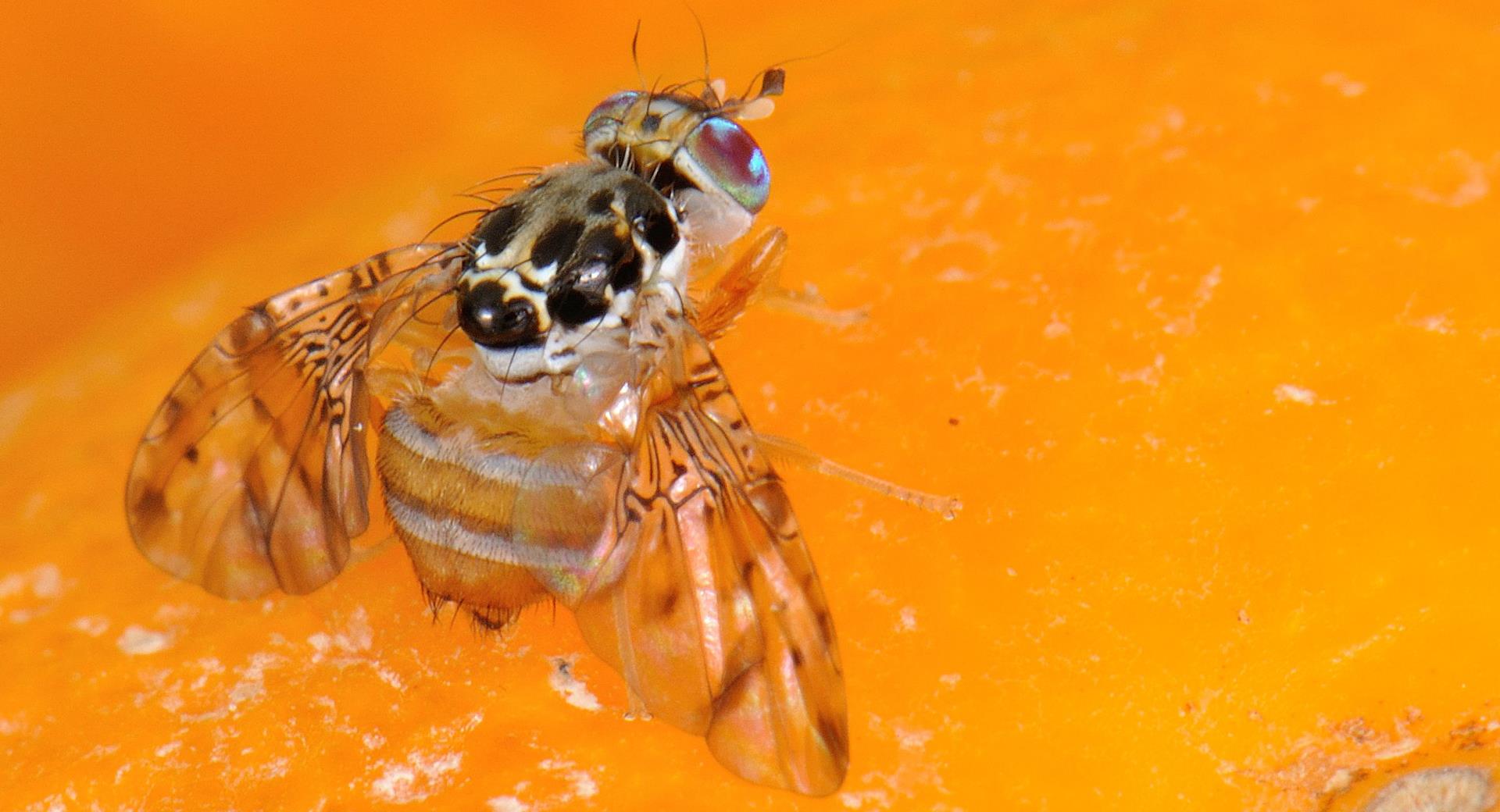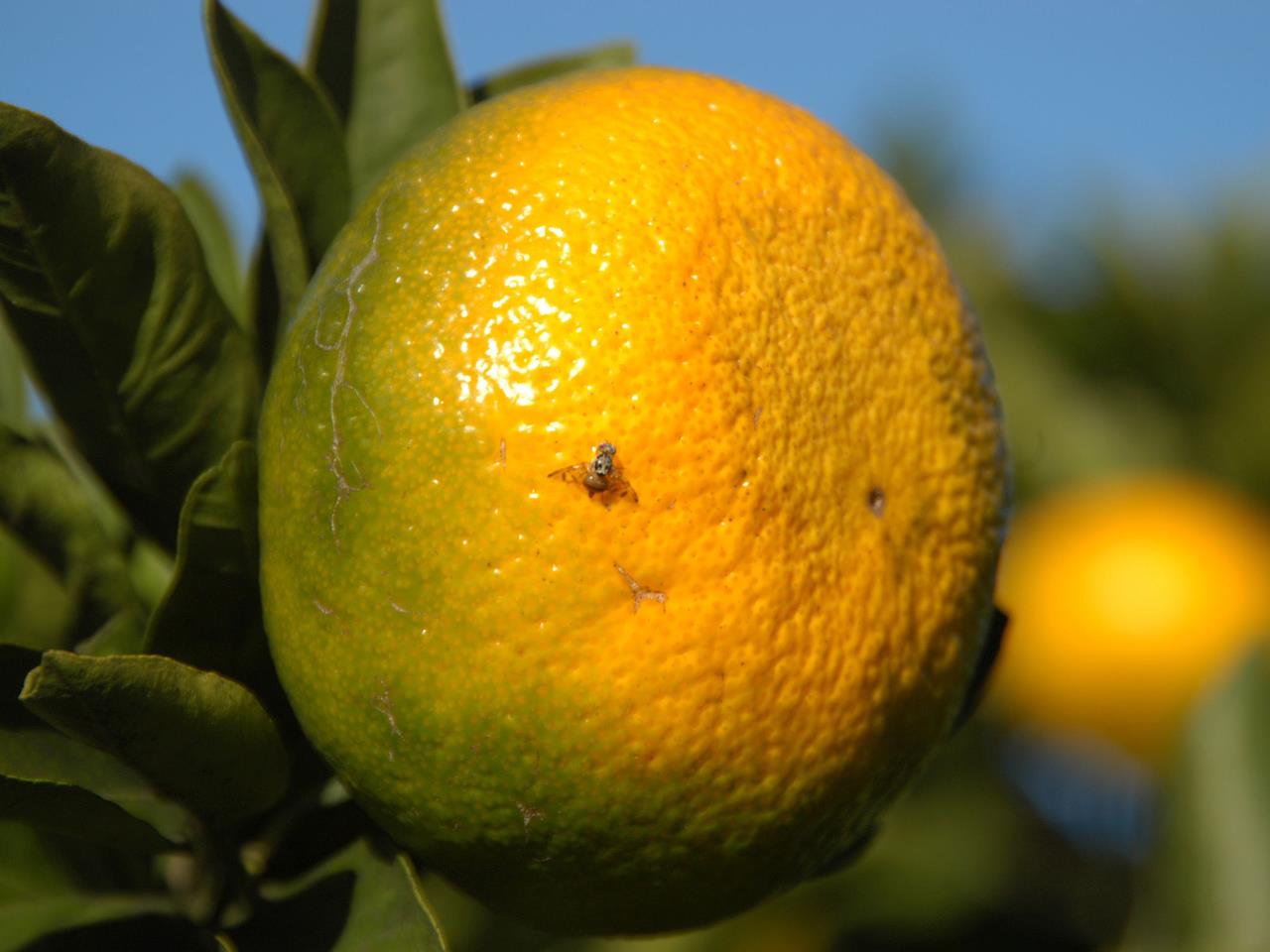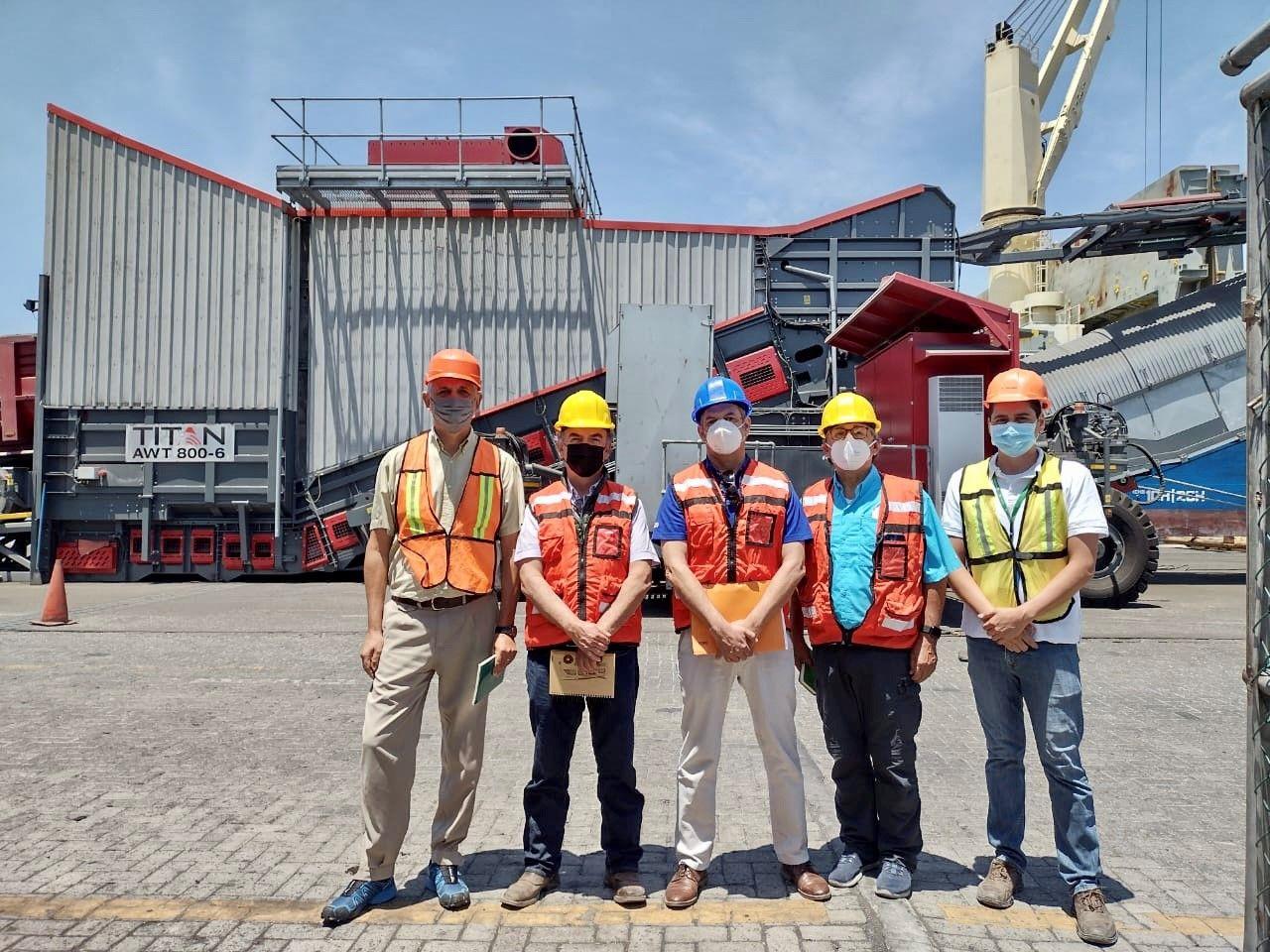
A nuclear technique averts a fruit fly emergency in Mexico
How FAO and the International Atomic Energy Agency use the Sterile Insect Technique to stop losses of food and livelihoods
The Mediterranean fruit fly is considered among the most devastating insect pests worldwide. An outbreak can lead to strict trade restrictions with enormous socio-economic consequences. Despite having been eradicated in Mexico in the 1980s, Mediterranean fruit flies were recently detected in the state of Colima. ©Joint FAO/IAEA Centre
17/06/2022
In the Mexican state of Colima, a recent outbreak of the Mediterranean fruit fly, also known as medfly, was very bad news. This voracious pest was eradicated in Mexico in the 1980s with the help of FAO and the International Atomic Energy Agency (IAEA), but insects know no borders. And unfortunately, with climate change, increase of trade and global travel favouring the spread of pests, they have once more found their way into this horticulturally important state, threatening to wreak havoc on the industry and on the livelihoods of farmers.
Thankfully, Mexico, FAO and the IAEA had prepared for just a scenario.
Building on its years of previous assistance to Mexico, the Joint FAO/IAEA Centre of Nuclear Techniques in Food and Agriculture responded to a request from the Mexican government and has assisted national plant protection authorities in developing and executing an emergency action plan that uses the Sterile Insect Technique (SIT) to contain and eradicate this dangerous pest.
This nuclear technique uses gamma rays to irradiate and thus sterilize male medflies so that, while they remain sexually competitive, they cannot produce offspring. They are mass-reared, sterilized and released into the wild to mate with females, decreasing the population over a few months’ time. The SIT is among the most environment-friendly insect pest control methods.
“In the past the Mediterranean fruit fly had been a big threat to the horticultural industry in Mexico, and we developed large scale programmes to defeat and contain its spread along our southern border,” said Maritza Juarez Duran, Director of the National Fruit Fly Programme of the Mexican National Service of Health, Food Safety and Quality (SENASICA).
“The detection of this pest in Colima in April 2021, 1 300 kilometers from the closest wild populations located in the state of Chiapas, at the border area between Mexico and Guatemala, was alarming and we value the IAEA’s and FAO’s support in helping us bring it under control.”


Left/top: With guidance from FAO and IAEA, Mexico has quickly enacted an emergency plan that employs the Sterile Insect Technique to contain and eradicate this pest. ©Joint FAO/IAEA Centre Right/bottom: The FAO/IAEA Technical Advisory Panel inspects cargo
A fly with consequences
The medfly (Ceratitis capitata) is considered among the most devastating insect pests worldwide. They lay their eggs in fruits and vegetables and after they hatch, the larvae feed on the pulp. Keeping orchards and gardens fly free is a prerequisite for exports to many countries. If there is a medfly outbreak, it can lead to strict quarantine restrictions on fruit and vegetable trade with enormous socio-economic consequences to the exporting country. The conventional alternatives, such as some post-harvest treatments of the crops, are expensive and often damage their quality, hurting the competitiveness of export products.
Using this SIT, Mexico was able to eradicate the fly from its borders in 1982. However, the fly can easily cross borders from infested areas so states must remain vigilant to incursions.
Mexico is the world’s seventh largest exporter of agricultural products so maintaining a medfly-free status is very important for the country. In the Colima outbreak, medflies were recorded affecting tropical almonds and some other fruits in urban areas, posing a risk to agricultural crops such as mangoes, guava, papayas, figs, oranges, pink grapefruits and carambola. Mexico estimates that it produces over USD 9.4 billion worth of horticultural crops for export every year. These could all be affected by the medfly outbreak if not brought under control.
Walther Enkerlin Hoeflich, an FAO/IAEA entomologist supporting medfly control programmes across Latin America and the Caribbean, travelled to Colima in April 2022. He led a panel of experts to verify that the activities undertaken by Mexican authorities were implemented following international standards and to recommend actions to improve the operation.
“Mexico’s response to the medfly outbreak in Colima was quick, professional and efficient. Their technicians are experienced in applying the SIT thanks to the long-standing cooperation Mexico has with the IAEA and FAO in using this technique,” Enkerlin Hoeflich said.

FAO and IAEA assisted Mexico in designing a new mass-rearing facility that can produce one billion sterile flies in a week. This facility is proving vital in containing the current outbreak in Colima and eradicating the pest. ©DGSV Senasica
FAO and IAEA assisted the country to design a new mass-rearing facility capable of producing one billion sterile flies a week. Inaugurated in 2021, this facility is the world’s second largest. So far, 1.2 billion sterile male flies produced in the facility have been released over Colima’s outbreak areas. The FAO/IAEA-led panel has recommended continuing the release of sterile flies until June 2022 in order to eradicate any remaining pest population pockets.
“The Colima operation is on track and for the now the outbreak is well under control. We’ll continue to work with Mexico to ensure the livelihoods of farmers remain secure from this devastating pest,” Enkerlin Hoeflich said.
The Joint Centre is furthering its collaboration with Mexico, advancing SIT technology through Research and Development as well as providing technical advice in the implementation of SIT.
Using nuclear solutions to combat pests is just one area of the Joint FAO/IAEA Centre’s work. This joint programme advances and supports the safe and appropriate use of nuclear and related technologies in food and agriculture, contributing to global food security and sustainable agricultural development worldwide.

